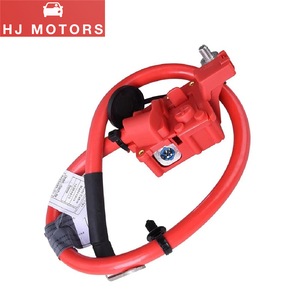(435896 products available)










































































































































































Engine and motor parts
These are the heart of the car. They can be very costly and require a lot of research to understand which ones are right for each car. Spark plugs and air filters are typical engine parts. Motor mounts and oil pan gaskets are other motor parts.
Chassis and suspension parts
Chassis refers to the car's body where everything else is attached. The suspension helps to give a smooth ride. Wheel bearings and axles connect the wheels to the car. Brake pads and brake lines are parts of the braking system that helps to stop the vehicle. Strut assemblies and control arms are components of the suspension system that help provide a smooth ride.
Body and interior parts
The outside of the car is called the body. Fenders and hoods are body parts. Glass and window tinting are also parts of the car. Seats and seat covers are inside the car. So are floor mats and door panels. Safety features like airbags and seat belt pre-tensioners are also inside the vehicle.
Electrical and lighting parts
Batteries and alternators are important for power. They help run the car. Wires called wiring harnesses connect everything. Lights like headlights and taillights help see at night. They are lighting parts of the vehicle. Turn signals help to show where one wants to go on the road.
Accessories and add-ons
GPS units help to find where one is going. So do phone holders. Bluetooth adapters let one listen to music in the car. Roof racks and tow bars are other accessories. They help to carry extra things. Custom wheels and decals are add-ons that help to change the look of the car.
Auto Parts and accessories have different specifications that make them suitable for various vehicles. When sourcing for these products, it’s essential to consider the following:
Quality
Quality is a key factor to consider when buying auto parts. High quality parts don't wear out easily. They also improve the performance of the vehicle. Parts that are not high quality can damage other parts of the vehicle. They also reduce the performance and efficiency of the vehicle.
Compatibility
Different vehicles are designed with different auto parts. When buying an auto part, it is important to ensure that it will fit well in the vehicle. The part should be designed for the specific vehicle make and model.
Warranty
Most suppliers offer warranty for auto parts. The duration of the warranty can differ from one supplier to another. Businesses should look for suppliers with a longer warranty period. In case of any manufacturer’s defect, the supplier will replace the part.
Price
When buying an auto part, it is important to compare prices from different suppliers. Look for a supplier that offers the best quality at an affordable price. Don't go for the cheapest supplier. They might sell low quality parts.
Functionality
Different auto parts have different functionalities. Depending on the functionality needed, source for the part that will perform the required function well. For example, if a good spark is needed to ignite the fuel-air mixture, a high-quality ignition coil is needed.
When buying car parts, customers may think of numerous factors, such as the price and the quality of the parts. However, the most important thing is to find a reliable auto parts supplier. Wholesalers and retailers need to establish partnerships with trustworthy auto parts suppliers to source quality merchandise and fulfill customer orders. Here are several tips to find a reliable auto parts supplier.
Replacing an auto part is a straightforward process. Here are the general steps to follow:
Q1: How can one know if an auto part is compatible with a vehicle?
A1: This can be known by reading the owner's manual, using online tools from manufacturers, or consulting a mechanic.
Q2: What should be done with old auto parts that are replaced?
A2: Old auto parts should be disposed of properly following local regulations. Many auto parts are recyclable, so getting them to the right place is essential.
Q3: How can one save money on auto parts?
A3: Savings can be made by purchasing parts online, looking for discounts, or choosing good quality parts that are not necessarily from a well-known brand.
Q4: What are the signs of a faulty auto part?
A4: Signs include strange noises, warning lights on the dashboard, leaks, or the vehicle not performing as it should. If any of these signs are noticed, an auto part should be checked immediately.